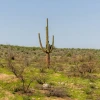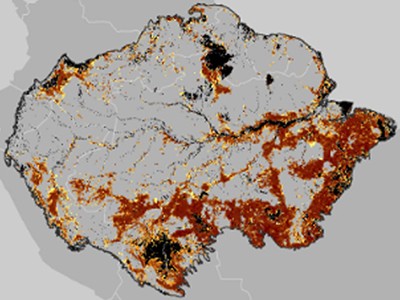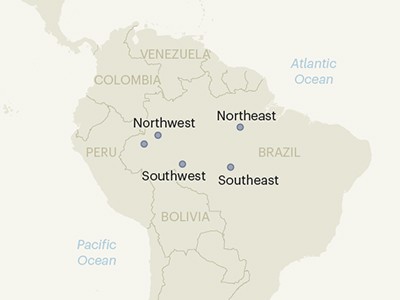Nature News and Views: Policy, drought and fires combine to affect biodiversity in the Amazon basin
Analysis of the ranges of nearly 15,000 plant and vertebrate species in the Amazon basin reveals that, from 2001 to 2019, a majority were affected by fire. Drought and forest policy were the best predictors of fire outcomes.
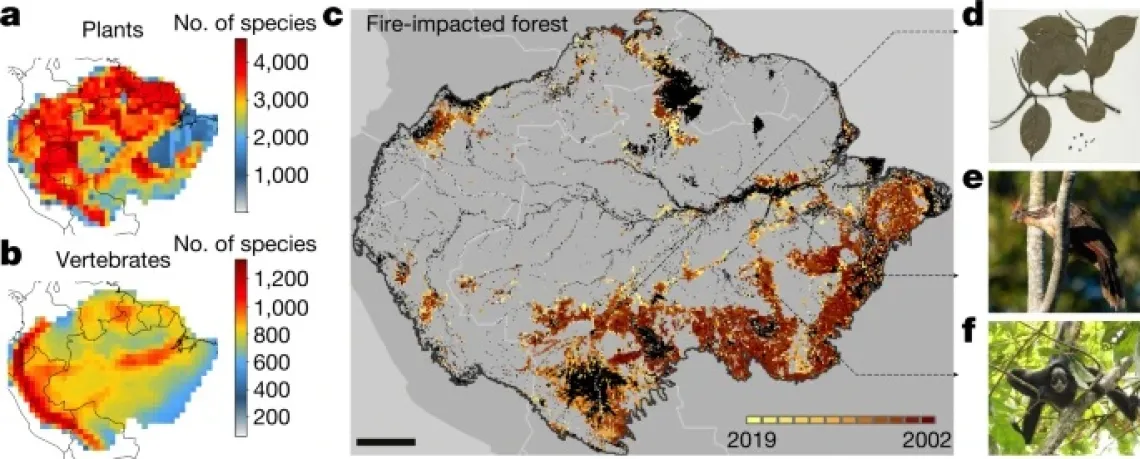
The Amazon basin contains the largest continuous area of tropical rainforests in the world, and has a crucial role in regulating Earth’s climate1. Rates of tropical-rainforest deforestation and the impacts of fire and drought there are well established2,3. Less is known, however, about how these factors might interact to affect biodiversity, and about the role that forest policy and its enforcement have had over time. Writing in Nature, Feng et al.4 address these issues.
Read the paper: How deregulation, drought and increasing fire impact Amazonian biodiversity
To track effects on biodiversity, the authors undertook unprecedented analyses of the geographical ranges of 11,514 plant and 3,079 vertebrate species in the Amazon basin. Feng and colleagues also analysed satellite data of forest-cover changes, tracked forest degradation due to fire and identified the potential consequences for biodiversity of drought and forest policy from 2001 to 2019. Their results clearly show the extent of fire-affected forests in the Amazon basin, and indicate how drought conditions and policy changes (for example, enforcement of laws, interventions in supply chains for soya bean and beef, and the expansion of protected areas5), particularly in Brazil, affected the temporal trend of fires. These factors have had an impact on the ranges of more than 13,000 of the plant and vertebrate species studied over the period.
Even more strikingly, the cumulative effects of fires have substantially affected the ranges of 77–85% of species identified as threatened by the International Union for Conservation of Nature (IUCN). The authors further discover a close association between forest policy in Brazil (pre-regulation between 2002 and 2008, and when regulations were in force between 2009 and 2018) and the effects of fire on biodiversity.
One of the most exciting aspects of the study is simply the number of species whose ranges are collected, modelled and compared. Indeed, Feng et al. develop the most comprehensive collection of range maps available so far of Amazonian plant and vertebrate species. Vertebrate ranges were estimated using IUCN-provided, expert-generated maps. The modelling of plant species at a 10-kilometre resolution for the maps in the Amazon basin is truly notable and impressive. Standardizing the scientific names and determining the locations of more than 11,000 plant species is in itself no small task. The authors went on to model the potential range of plant species. They used three well-accepted modelling approaches to estimate the distribution of species (namely, the Poisson point process model, range-bagging and grid cells), choosing the modelling approach on the basis of the number of observation records per species. This is clearly the largest and highest-resolution data set of range maps that currently exists for the Amazon basin.
Southeast Amazonia is no longer a carbon sink
Although previous studies have examined rates of deforestation and the consequence of fire and drought in the Amazon6,7, this investigation is the first to compare all three factors over a two-decade period and to assess the effect on the predicted ranges of plants and vertebrate species. Since 2000, the imaging sensors (termed MODIS sensors) on the Aqua and Terra satellites have provided data on a global scale for percentage forest cover (at a resolution of 250 metres), active fires (at a resolution of 1 kilometre), and burnt areas (at a resolution of 500 metres). Applying these data sets and a widely used drought index enabled Feng and colleagues to undertake this timely assessment.
The results clearly show fire-affected forests over the past two decades in the ‘arc of deforestation’ spanning the southern edge of the Amazon basin. Over time, fires have begun to occur at locations farther inside the Amazonian rainforest. Since 2001, fires potentially affected the ranges of 64% of the species examined. As expected, drought years (2005, 2010 and 2015) had an effect on the extent of active fires and burnt areas, and the authors provide evidence that drought is a key driver of fire-induced forest loss in the Amazon basin. However, the areas affected were strikingly reduced during the regulation period (2009–18) in Brazil, when a series of policies aimed at reducing deforestation and forest burning were implemented5.
Most notably, the researchers stress that shifts in forest policy in Brazil during the first eight months of 2019 had substantial effects on the clearance and degradation of forest, and also reduced the ranges of plants and animals in the Amazon basin. Relaxed enforcement of forest policies at the start of 2019 began to reverse years of progress made from 2009 to 2018 on tropical-forest conservation, with up to 10,343 square kilometres (an area nearly the size of Jamaica) of the region affected by forest fires in 2019 alone (Fig. 1).
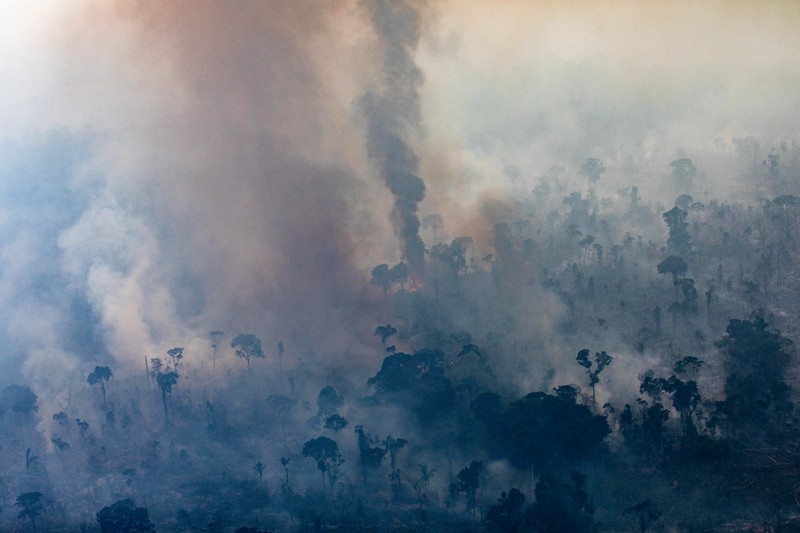
Figure 1 | Fire in the Amazon. Rainforest ablaze during August 2019 in the Candeias do Jamari region near Porto Velho, Brazil.Credit: Victor Moriyama/Getty
The authors acknowledge several limitations to their study, such as the low density of biological collections and observations for plants in the region8, and the fact that remote-sensing methods using MODIS tend to underestimate the number and extent of forest fires7. Their results nevertheless highlight the key role of policy and enforcement in helping to preserve biodiversity in the Amazon. Feng et al. clearly show that forest-policy regulations can be beneficial in conserving the extent and habitat quality of Amazonian rainforests, and can reduce the extent of deforestation, degradation and forest fires there. Most crucially, the Brazilian government’s past forest policy seems to have mitigated the effects of droughts. Climate change will probably make drought increasingly common in the Amazon basin1, and it is clear that strict policies will need to be imposed and enforced to reduce forest fires and their effects on the ranges of species and on biodiversity.
Nature 597, 481-483 (2021)
doi: https://doi.org/10.1038/d41586-021-02320-0
References
-
Marengo, J. A., Tomasella, J., Soares, W. R., Alves, L. M. & Nobre, C. A. Theor. Appl. Climatol. 107, 73–85 (2012).
-
Nepstad, D. C. et al. Nature 398, 505–508 (1999).
-
Davidson, E. A. et al. Nature 481, 321–328 (2012).
-
Feng, X. et al. Nature 597, 516–521 (2021).
-
Nepstad, D. Science 344, 1118–1123 (2014).
-
Hansen, M. C. et al. Science 342, 850–853 (2013).
-
Libonati, R. et al. Sci. Rep. 11, 4400 (2021).
-
Hopkins, M. J. G. J. Biogeogr. 34, 1400–1411 (2007).


